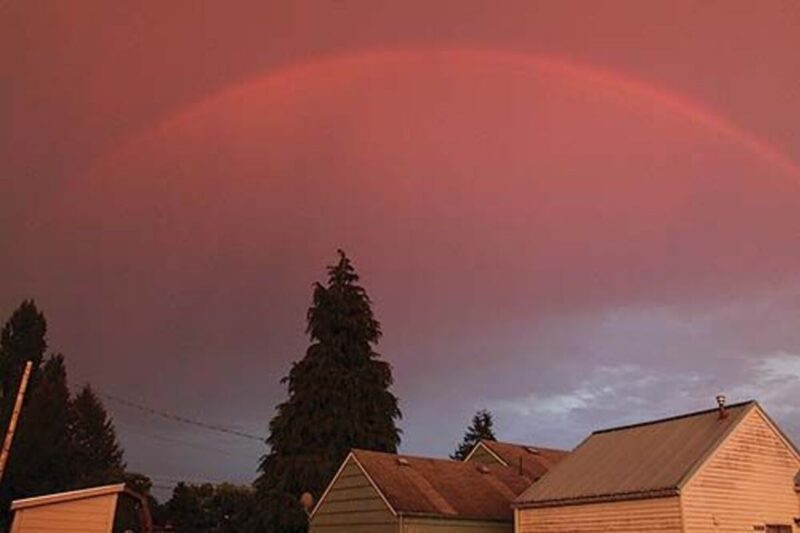Sean C. Morgan
The hot weather relented in a big way last week as lightning and a little rain rolled through Sweet Home the evening of July 8.
That lightning brought fire, but the several blazes reported all have been small. The moisture slowed the rapid advance of fire danger brought on by record highs and a lack of precipitation leading up to fire season.
Meanwhile, fire danger remains high, with the Industrial Precaution at Level II; and the Willamette National Forest has expanded its public use restrictions to wilderness areas.
Last week’s storm “was pretty much widespread across the county,” said Craig Pettinger, unit forester with the Oregon Department of Forestry Sweet Home Unit. Lightning mostly struck in the moderate to high country in the Green Peter and Quartzville area.
The Sweet Home Unit responded to four fires, Pettinger said. “All were very small and mostly just creeping. We’re going to keep finding them for days now.”
The U.S. Forest Service had seven fires each in Sweet Home and Detroit ranger districts, said Katie Isacksen, spokeswoman. Officials had not been able to locate four of them as of the weekend. The rest were staffed and mostly confined to single trees.
“Everything’s going well in that regard,” Isacksen said.
Officials expected just showers with the lightning, Pettinger said. “No one expected this much. It’ll give us a few days reprieve.”
At 8 a.m. on Friday, the 24-hour figure for rainfall at the Sweet Home Unit compound was .17 inches.
“I bet we’re going to have more than that now,” Pettinger said that afternoon.
The lightning was mostly confined to the hills, but one or two strikes hit close to town, with a couple more towards Brownsville, Pettinger said.
A Highway 228 resident reported a fire during the storm on July 8, Pettinger said. Fortunately, it turned out to be a light from a nearby house.
“The good news is people have been calling and reporting stuff,” Pettinger said, and officials would rather respond to those kinds of calls rather than see a fire grow unreported.
After cooler weather and moisture, Pettinger said, the weather is expected to return to about normal instead of the abnormal heat of May and June.
“We’re not staring triple digits in the face,” he said. “We were looking at a bad trend there.”
The rain soaks the fine fuels, like grass, which are primarily responsible for spreading fire, Pettinger said. The precipitation doesn’t do anything for the heavier fuels, like logs. Those take a quarter-inch of rain every day for a month to soak.
The weather really never did that over the winter in the first place, Pettinger said, and that’s one of the things that gave fire season a head start this year.
“The moisture does help with fire activity,” Isacksen said. Fire won’t spread as quickly, but “the rain didn’t reach through the canopy.”
The forest floor didn’t get wet, she said, and it didn’t change the overall fire danger.
The Forest Service expanded its public use restrictions to wildernesses on July 10, prohibiting campfires, warming fires and cooking fires, including charcoal and portable propane campfires. Portable cooking stoves with pressurized liquid and bottled gas remain allowed.
Smoking is prohibited except in areas clear of flammable debris.
Fires are allowed in designated fire pits in campgrounds.
“Since wilderness areas are higher in
elevation, they typically don’t have as high of fire danger,” said Sean Stafford, fire management staff officer for the Willamette National Forest. “This year is an exception. The current drought conditions and long-term forecast mean that nowhere outside designated areas is it safe to have a fire.”
Wilderness areas in the Willamette National Forest include Opal Creek, Mt. Jefferson, Middle Santiam, Menagerie, Three Sisters, Mt. Washington, Waldo Lake, Bull of the Woods and Diamond Peak.





